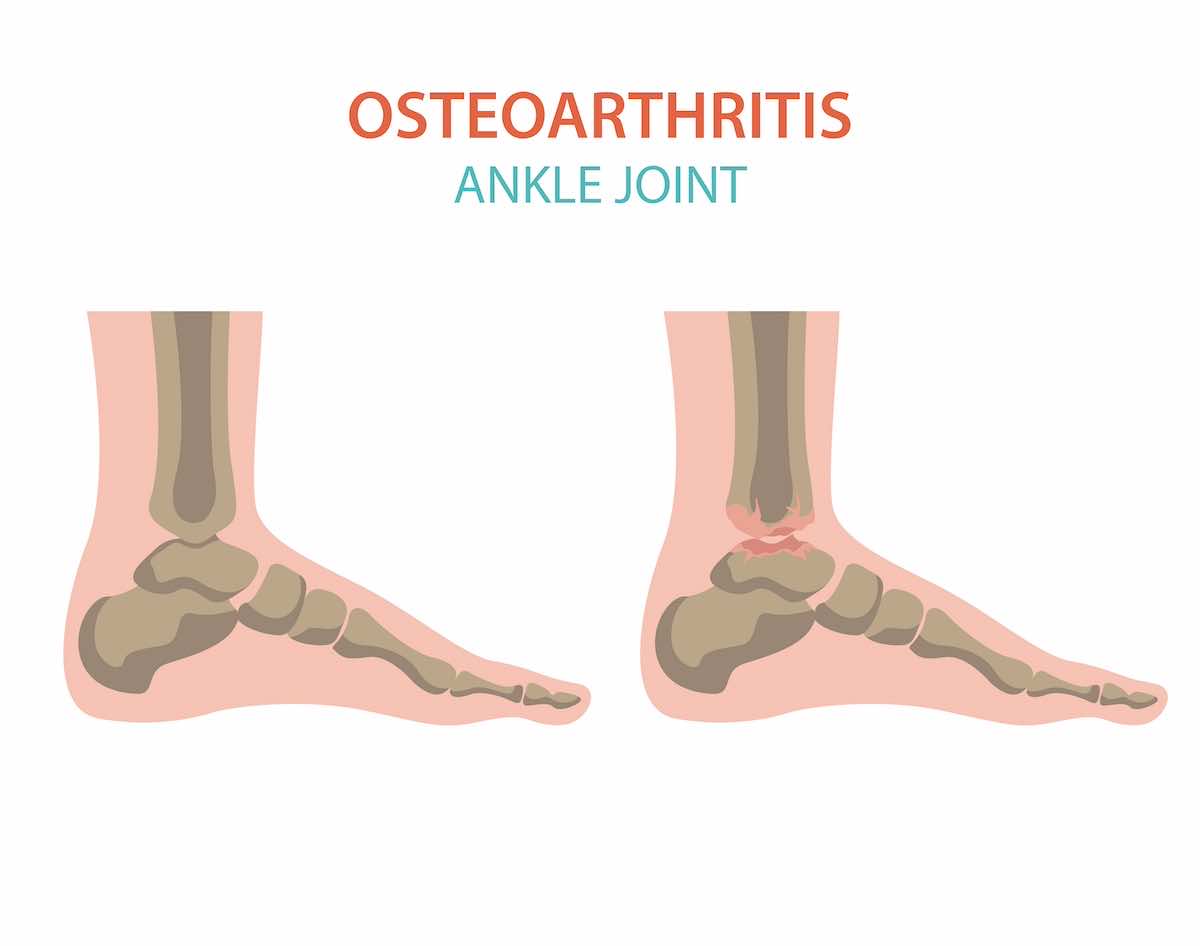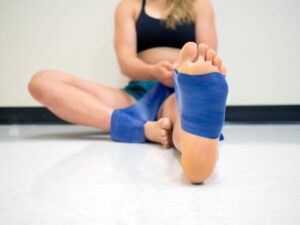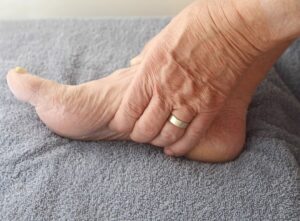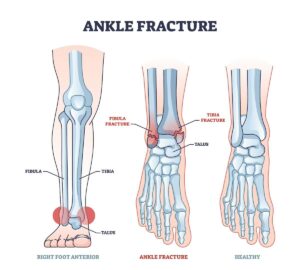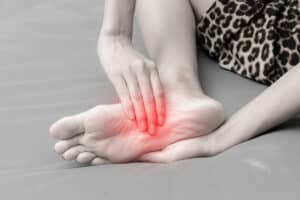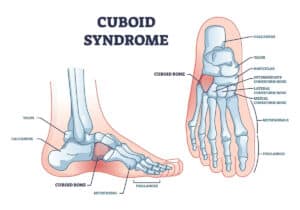Free download: Top 10 Natural & Easy Remedies for Joint Pain from Home. Learn these helpful remedies.
Estimated Reading Time: 6 minutes read
Ankle osteoarthritis, a condition characterized by the gradual wear and tear of the ankle joint’s cartilage, can be a significant source of pain and mobility issues. This degenerative joint disease often results in stiffness, discomfort, and a reduced range of motion, making everyday activities challenging. Understanding and managing this condition is crucial for maintaining an active lifestyle and mitigating its impact on daily tasks.
Incorporating these exercises into your daily regimen addresses the immediate discomfort and contributes to long-term joint health. The following guide provides a comprehensive approach to exercise for those dealing with ankle osteoarthritis, focusing on the most effective methods for pain relief and improved joint function.
Table of Contents
Causes of Ankle Osteoarthritis
Understanding the causes of ankle osteoarthritis is critical to effective management:
- Joint Wear and Tear: Natural aging process leading to the breakdown of joint cartilage.
- Previous Injuries: Past ankle injuries, such as fractures or sprains, can lead to osteoarthritis.
- Obesity: Excess weight puts additional strain on the ankle joints.
- Genetic Factors: A family history of osteoarthritis can increase the risk.
- Joint Overuse: Repetitive stress on the ankle joint from specific jobs or sports.
Symptoms of Ankle Osteoarthritis
Recognizing the symptoms of ankle osteoarthritis is essential for timely intervention:
- Joint Pain: Especially during or after movement.
- Stiffness: Particularly noticeable in the morning or after inactivity.
- Swelling: Around the joint due to inflammation.
- Limited Range of Motion: Difficulty in performing movements that involve the ankle.
- Crepitus: A grating sensation or sound during joint movement.
Risk Factors for Ankle Osteoarthritis
Certain factors increase the likelihood of developing ankle osteoarthritis:
- Age: The risk increases with age.
- Gender: Women are more likely to develop osteoarthritis.
- Obesity: Higher body weight increases stress on the ankle joint.
- Occupational Hazards: Jobs that involve heavy lifting or prolonged standing.
- Sports Injuries: Athletes in high-impact sports are at greater risk.
Stretching and Strengthening Exercises
Incorporating specific exercises into your routine can significantly benefit ankle osteoarthritis management.
A: Stretching for Ankle Flexibility
Stretching is crucial for maintaining and improving ankle flexibility, which osteoarthritis can affect.
1. Calf Stretch
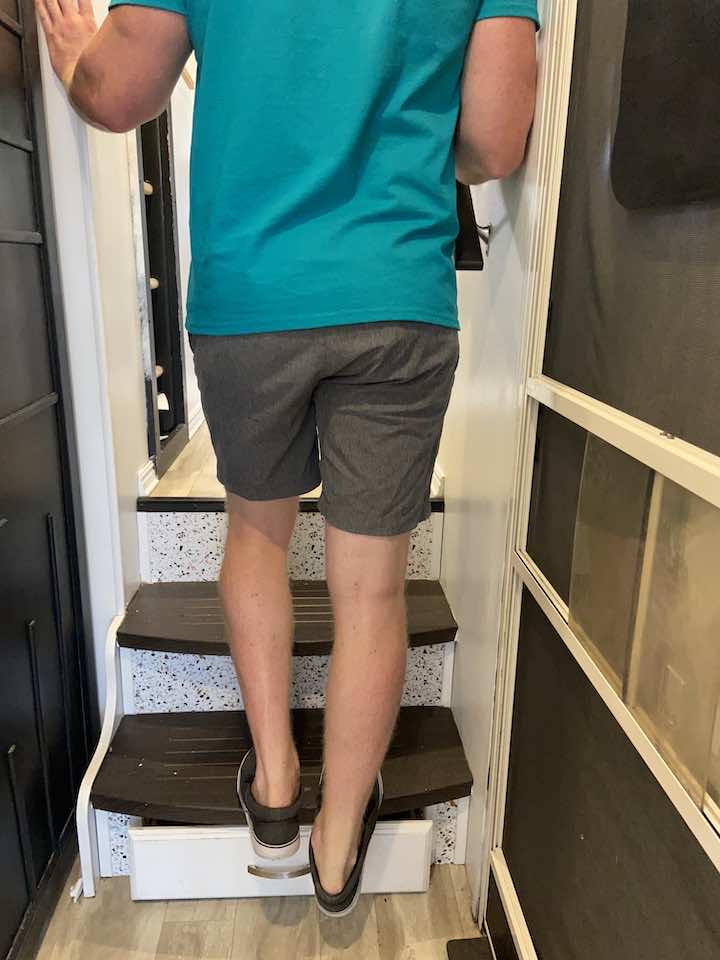
- While holding onto the railing of a staircase, step both feet up.
- Slightly stagger your feet so that the injured heel is hanging off the step.
- Your front leg should bend slightly, while the back (injured) leg’s knee will be straight.
- Hold this stretch for 30 seconds before relaxing.
- Repeat the stretch two more times for a total of three sets.
2. Soleus Calf Stretch
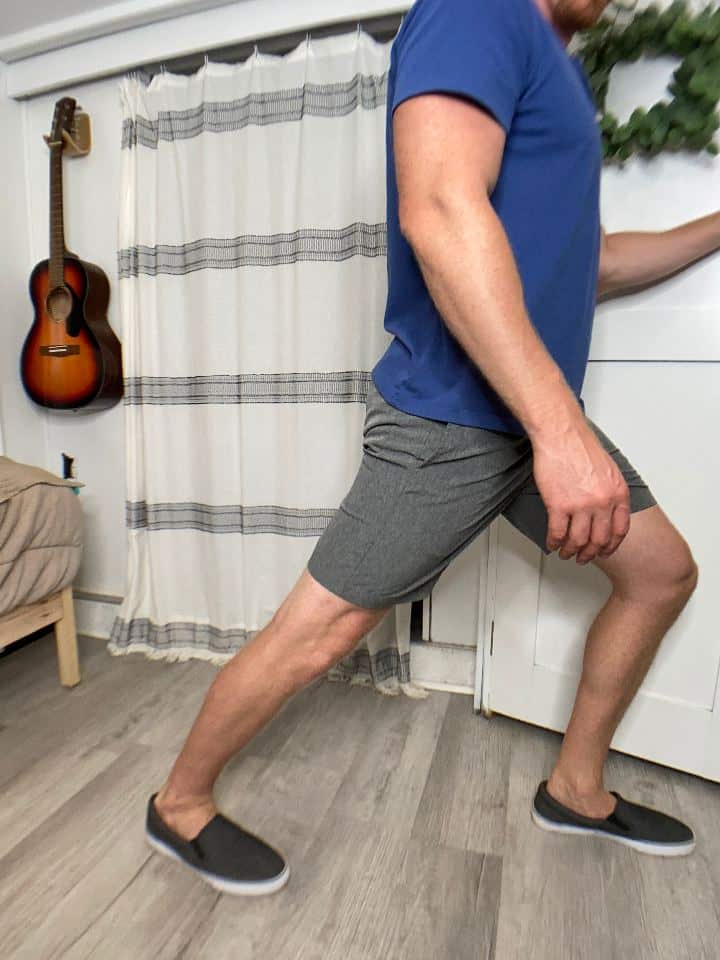
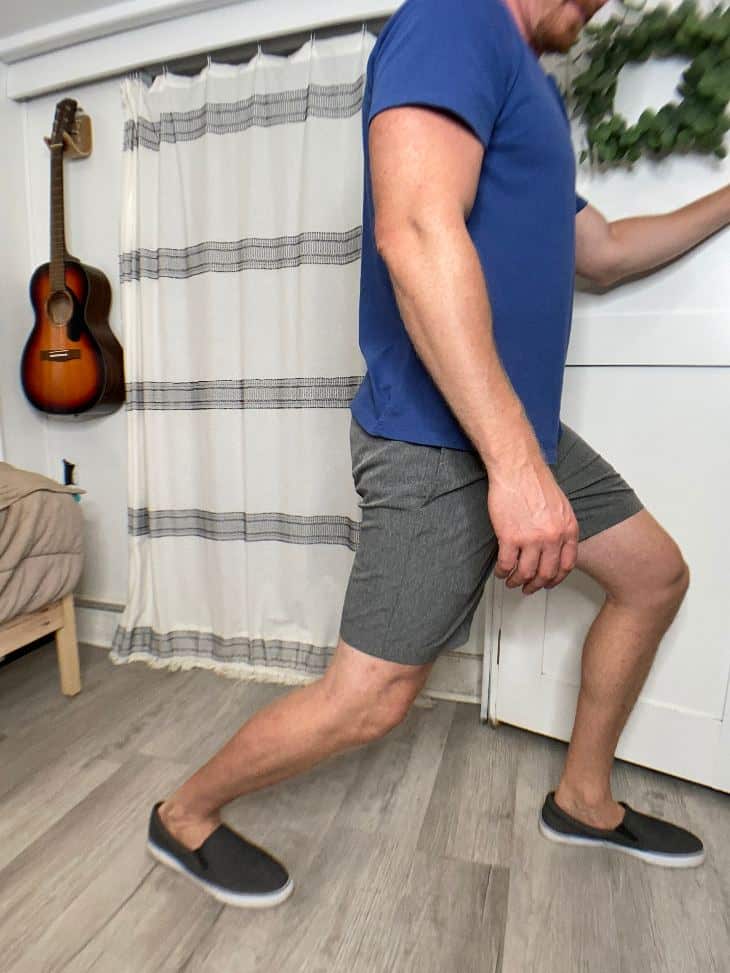
- Perform this stretch exactly like the gastrocnemius calf stretch, except with a small difference.
- Instead of keeping the back leg straight, have the knee slightly bent. You’ll feel more of a direct Achilles tendon stretch with this.
- Hold the position for at least 30 seconds and perform 3 sets.
- Repeat on the other leg.
Regular stretching can help ease the stiffness and improve the range of motion in the ankles affected by osteoarthritis.
B: Strengthening Exercises
Strengthening the muscles around the ankle provides better support for the joint, which is essential in managing osteoarthritis.
1. Marble Pick-Ups
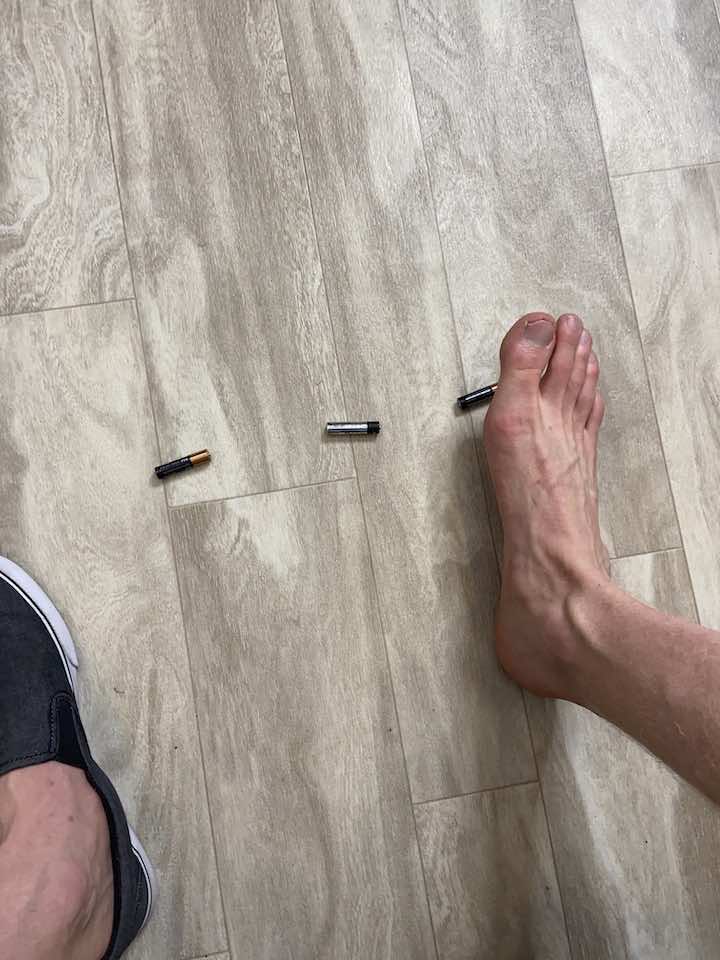
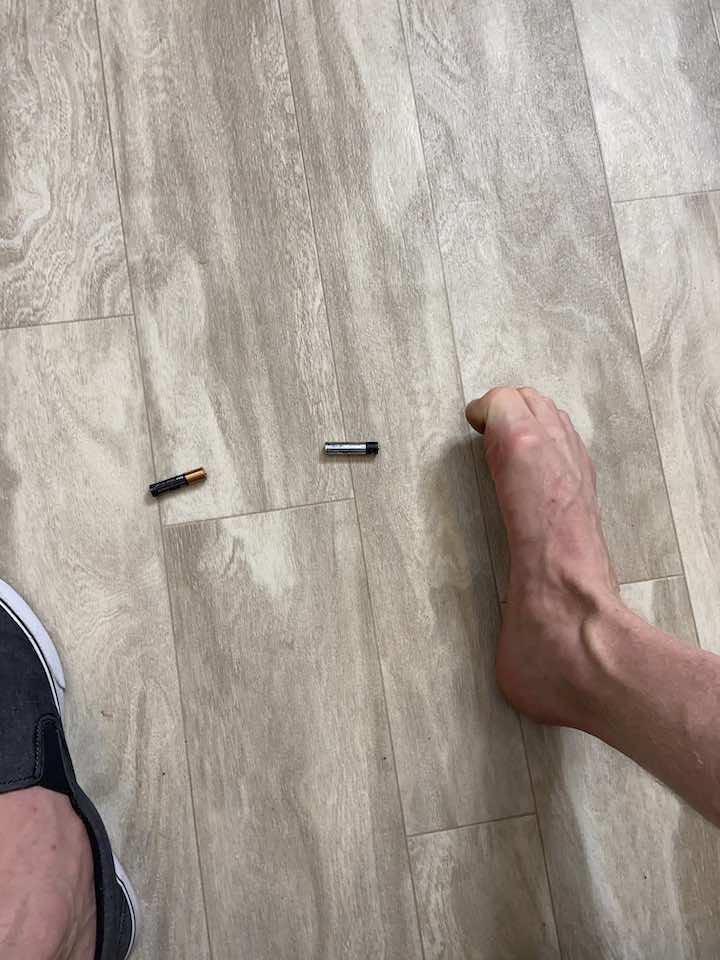
- Get 10-20 marbles and place them on the floor with a cup next to your pile of marbles.
- Stand up and hold onto a steady surface like a counter to help with balance.
- Then in standing, grab a marble with your toes and lift it into the cup. Picking up marbles can be challenging, but the great thing is that even just trying to pick up the marble will strengthen your foot!
2. Arch Doming
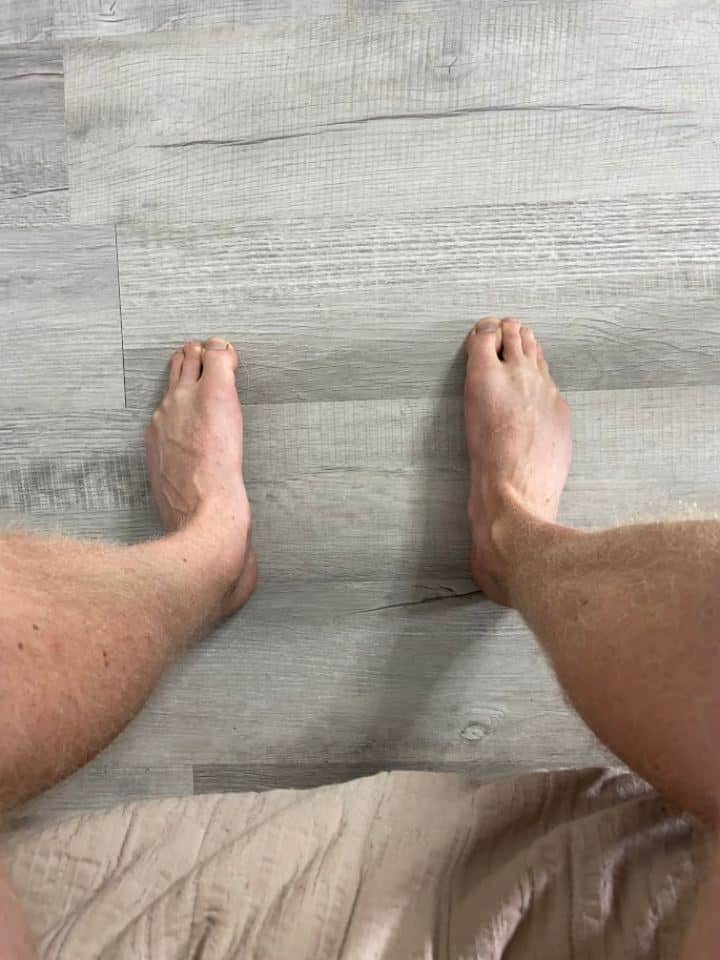
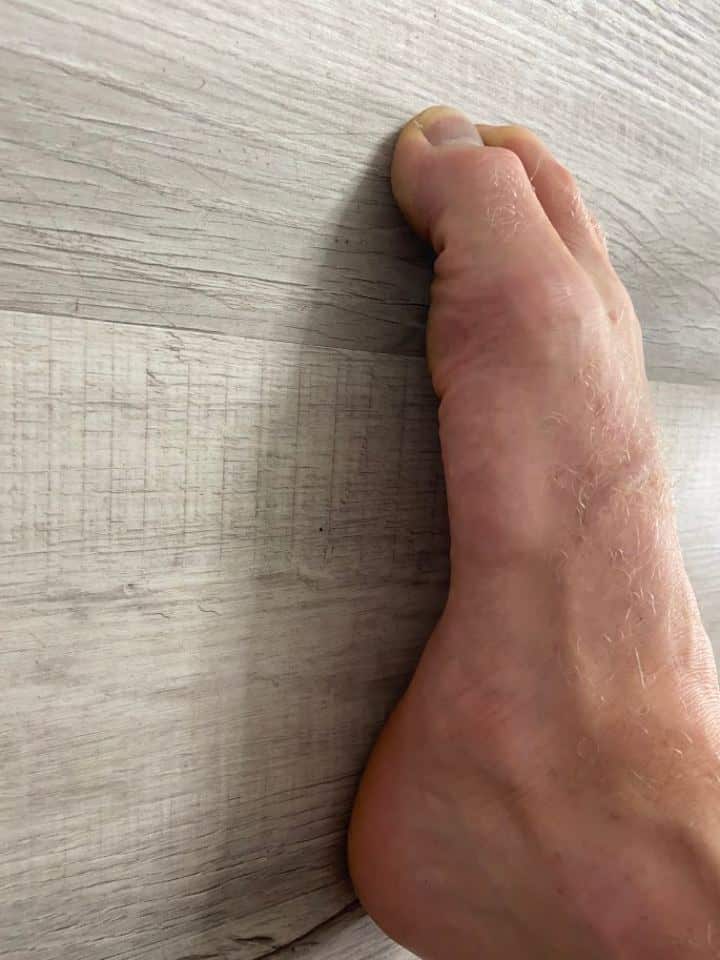
- Starting position: Seated in a chair with the fleet flat on the floor. Shoes should be removed.
- You can practice with both feet at the same time or one foot at a time.
- Squeeze the bottom of the foot and lift the inner arch off the floor, without moving any other part of the foot.
- Hold this lift for 2 seconds, then slowly allow the arches to relax back down to the floor.
- Repeat 10 repetitions for 3 sets.
3. Ankle Eversion with Resistance Band
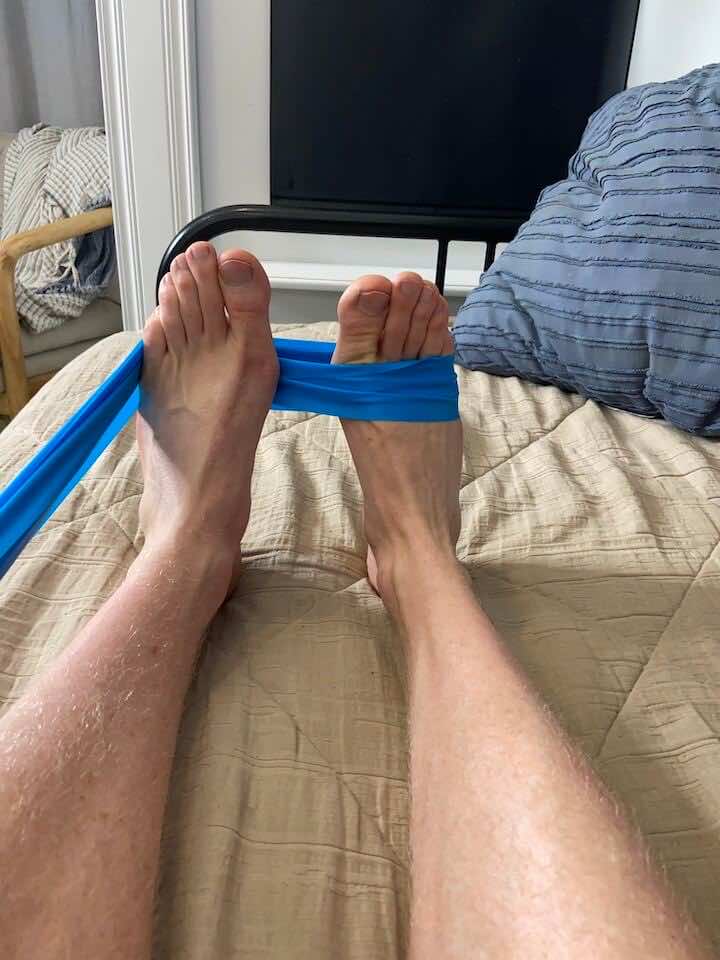
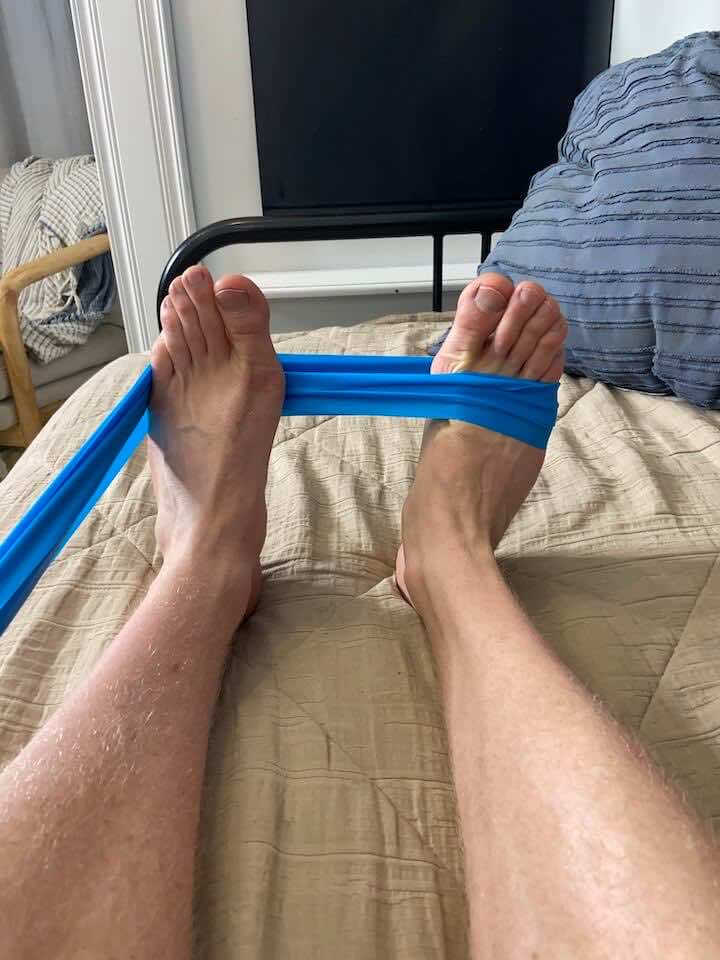
- Lay down on your bed with your ankle off the end.
- Loop the band around your right foot and around your left, as seen in the graphic. We’re going to use your left foot as an anchor for your right foot as your exercise.
- Bring your right foot out like you’re angling your ankle away from your left foot, squeeze in, then relax.
- Do this for 10 repetitions and complete 3 sets in total.
Tip: Work on just moving your ankle and not your entire leg when performing this exercise! See if your knee rolls out at all; try to keep it still.
4. Ankle Inversion with Resistance Band
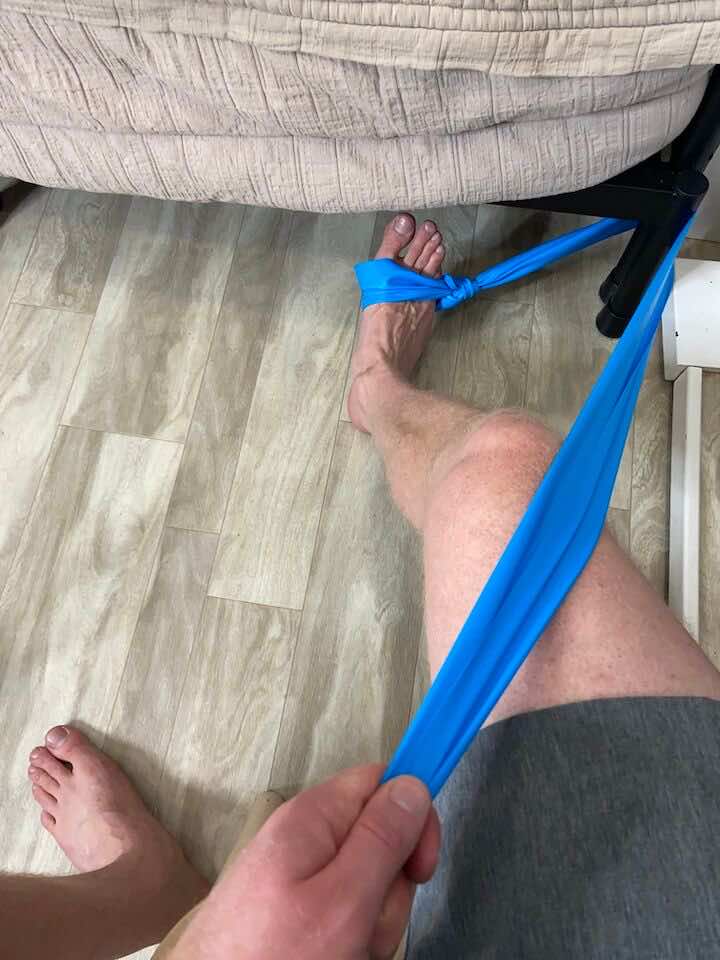
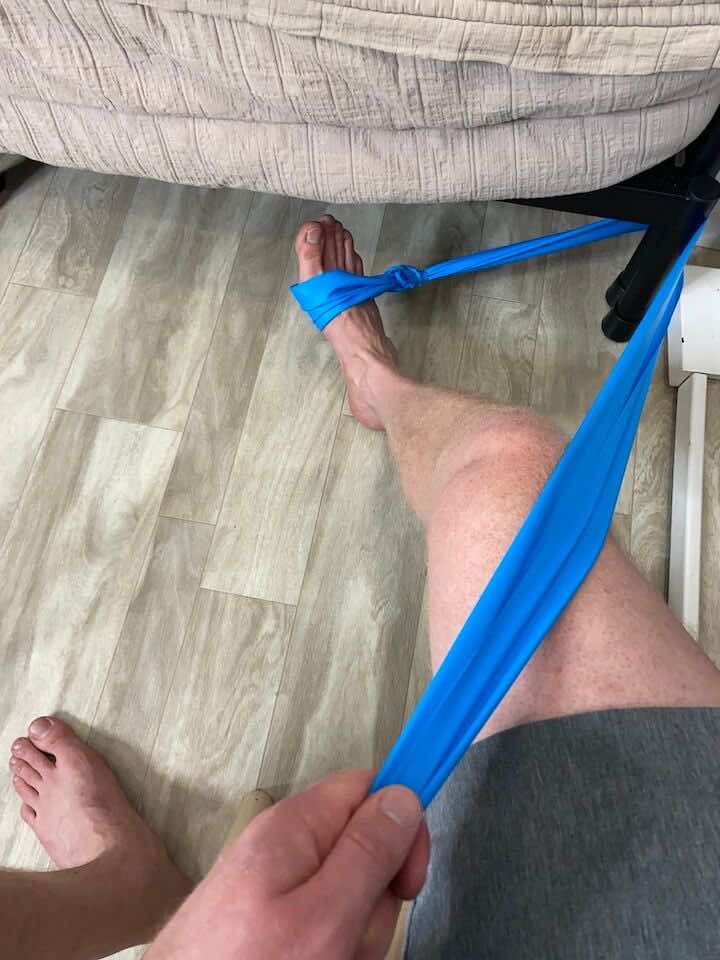
- Sit near a heavy table or sturdy chair that won’t move easily.
- Bring your foot in like you’re angling your ankle toward your other foot, squeeze in, then relax. Loop the resistance band over your foot and around the table or chair leg, as shown in the graphic above.
- Repeat this movement for 10 reps, and do a total of 3 sets.
Tip: Work on just moving your ankle and not your entire leg when performing this exercise! See if your knee rolls out at all, try to keep it still.
5. Ankle Dorsiflexion with Resistance Band
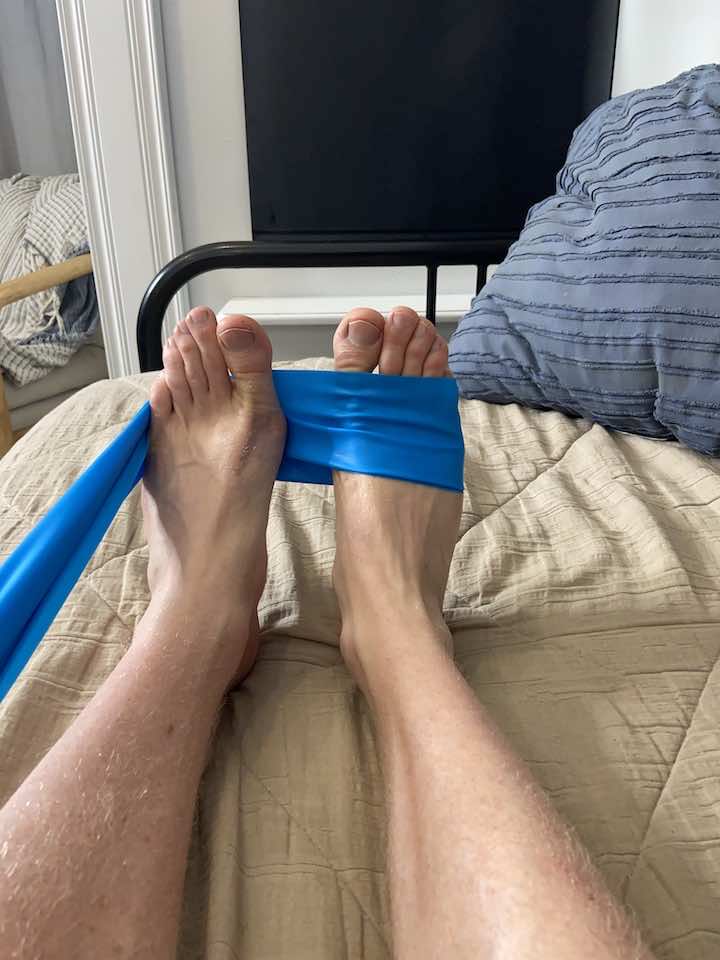
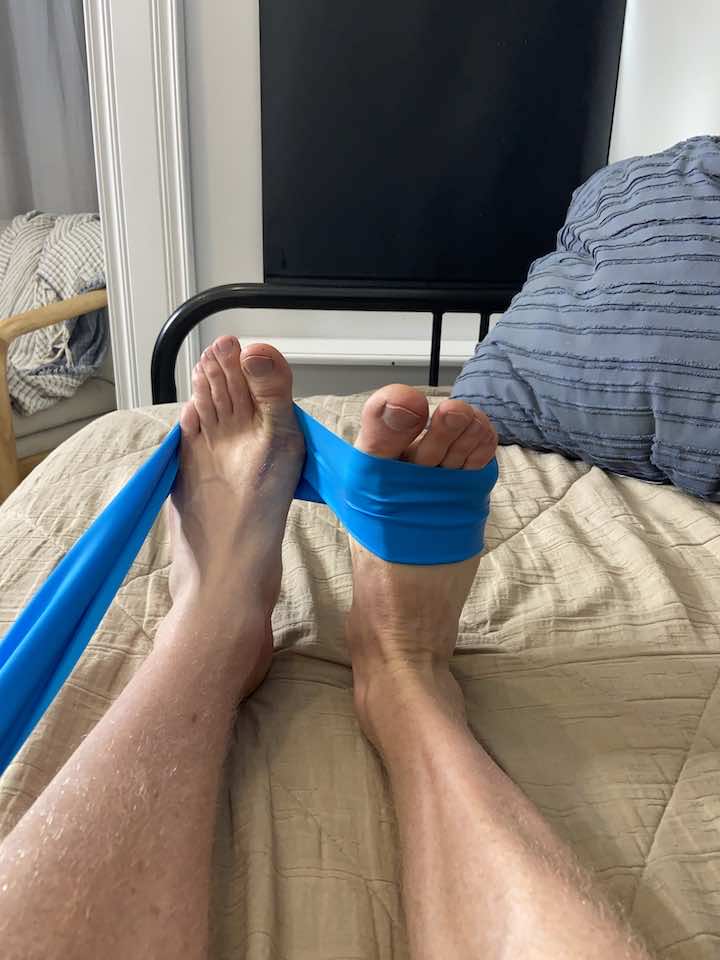
- Lay down on your bed with your ankle off the end.
- Loop the band around your right foot and loop the band around your left foot.
- Point your left foot and hold that position.
- Draw your right foot up like you’re trying to bring your toes to your nose, then relax. Finish the set, then repeat with your left foot.
- Repeat 10 repetitions for 3 sets.
6. Ankle Plantar Flexion with a Resistance Band
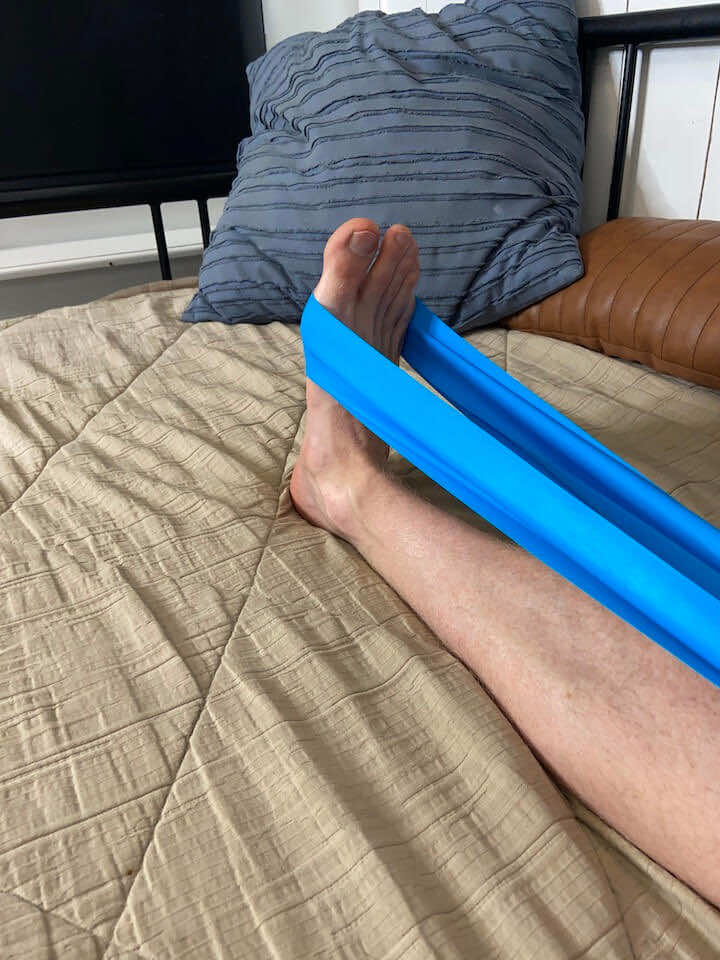
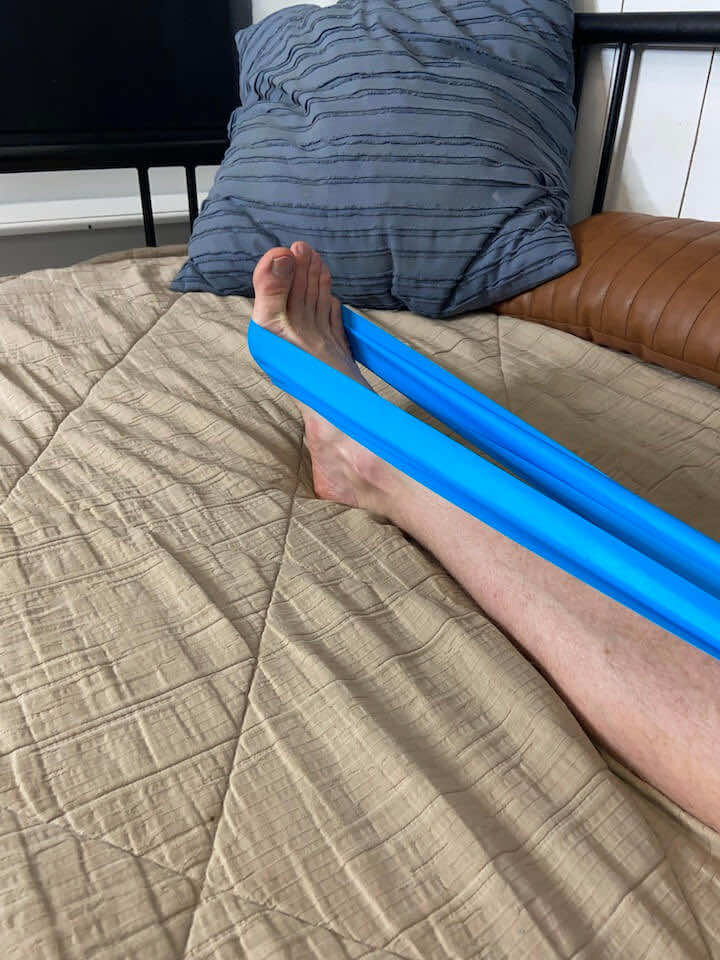
- Lay down on your bed with your ankle off the end.
- Loop the band around your right foot and hold onto the other end of the band with your hands.
- Point your toes and squeeze the back of your calf muscles, then relax. Finish the set, then repeat with your left foot.
- Repeat 10 repetitions for 3 sets.
7. Single Leg Balance
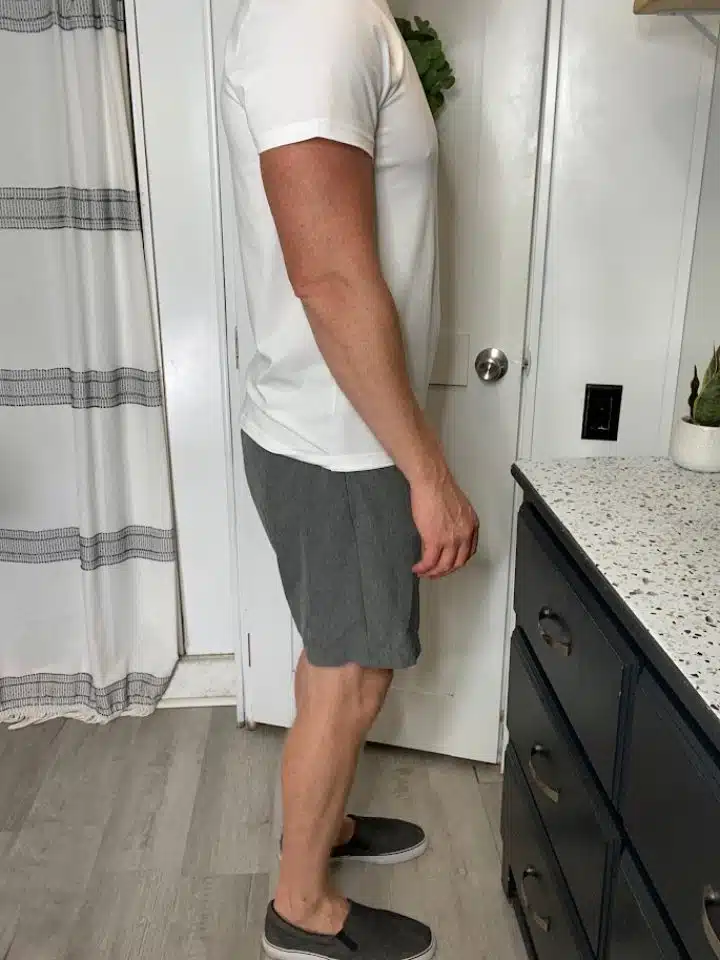
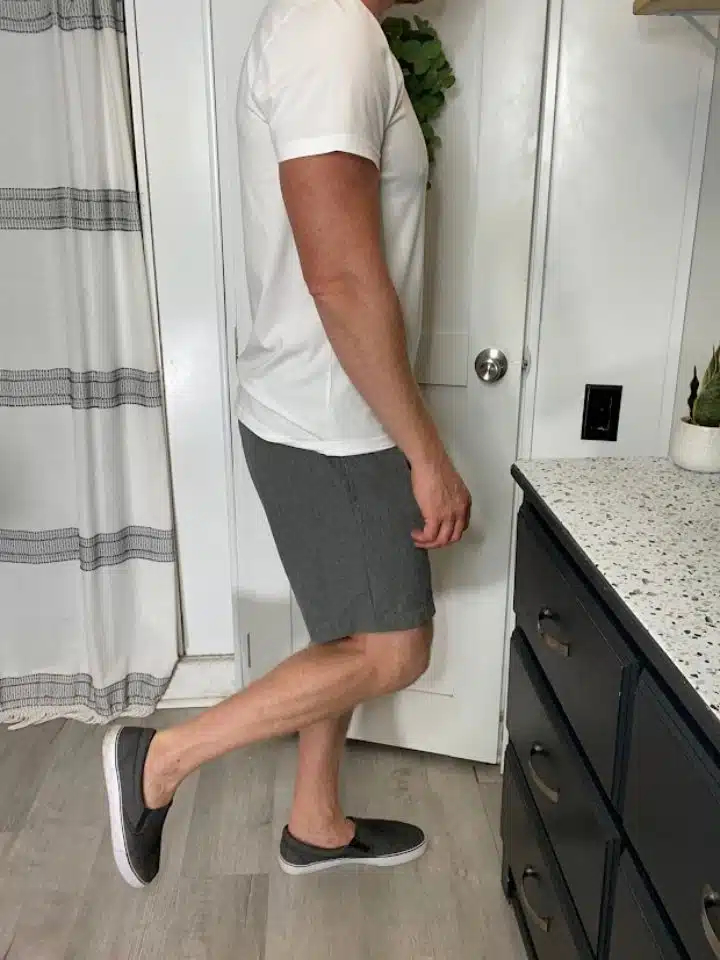
- Starting position: Standing in front of a sturdy surface, such as your countertop.
- Shift all of your weight onto the injured leg (avoid locking into the knee joint), picking the opposite foot up off the floor.
- Practice balancing for 30 seconds (you can use the counter for balance assist as needed).
- Return to your starting position to take a break.
- Repeat 2 more times on both sides.
Conclusion
Managing ankle osteoarthritis with exercise is a key strategy for enhancing mobility and reducing discomfort. Regularly performing targeted stretches and strength-building routines can improve joint flexibility and pain relief. These exercises are crucial not just for immediate symptom relief but also for long-term joint health.
However, consistency in practice is vital. Integrating these exercises into your daily routine ensures ongoing support for your ankle. Tailoring these exercises to your comfort level and seeking professional advice for a personalized approach is also important. With commitment and the right exercises, you can effectively manage the symptoms of ankle osteoarthritis and maintain an active lifestyle.


